β-catenin-independent regulation of Wnt target genes by RoR2 and ATF2/ATF4 in colon cancer cells
- PMID: 29453334
- PMCID: PMC5816634
- DOI: 10.1038/s41598-018-20641-5
β-catenin-independent regulation of Wnt target genes by RoR2 and ATF2/ATF4 in colon cancer cells
Abstract
Wnt signaling is an evolutionarily conserved signaling route required for development and homeostasis. While canonical, β-catenin-dependent Wnt signaling is well studied and has been linked to many forms of cancer, much less is known about the role of non-canonical, β-catenin-independent Wnt signaling. Here, we aimed at identifying a β-catenin-independent Wnt target gene signature in order to understand the functional significance of non-canonical signaling in colon cancer cells. Gene expression profiling was performed after silencing of key components of Wnt signaling pathway and an iterative signature algorithm was applied to predict pathway-dependent gene signatures. Independent experiments confirmed several target genes, including PLOD2, HADH, LCOR and REEP1 as non-canonical target genes in various colon cancer cells. Moreover, non-canonical Wnt target genes are regulated via RoR2, Dvl2, ATF2 and ATF4. Furthermore, we show that the ligands Wnt5a/b are upstream regulators of the non-canonical signature and moreover regulate proliferation of cancer cells in a β-catenin-independent manner. Our experiments indicate that colon cancer cells are dependent on both β-catenin-dependent and -independent Wnt signaling routes for growth and proliferation.
Conflict of interest statement
The authors declare no competing interests.
Figures
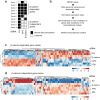
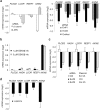
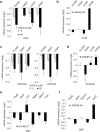
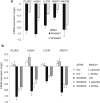
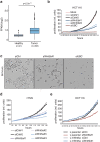
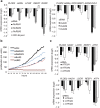

Similar articles
-
Canonical and non-canonical Wnt signaling are simultaneously activated by Wnts in colon cancer cells.Cell Signal. 2020 Aug;72:109636. doi: 10.1016/j.cellsig.2020.109636. Epub 2020 Apr 10. Cell Signal. 2020. PMID: 32283254
-
The Wnt5a/Ror2 noncanonical signaling pathway inhibits canonical Wnt signaling in K562 cells.Int J Mol Med. 2011 Jan;27(1):63-9. doi: 10.3892/ijmm.2010.560. Epub 2010 Nov 10. Int J Mol Med. 2011. PMID: 21069266
-
Prognostic significance of Ror2 and Wnt5a expression in medulloblastoma.Brain Pathol. 2013 Jul;23(4):445-53. doi: 10.1111/bpa.12017. Epub 2013 Jan 25. Brain Pathol. 2013. PMID: 23278988 Free PMC article.
-
Vitamin D and Wnt/beta-catenin pathway in colon cancer: role and regulation of DICKKOPF genes.Anticancer Res. 2008 Sep-Oct;28(5A):2613-23. Anticancer Res. 2008. PMID: 19035286 Review.
-
Distinctive microRNA signature associated of neoplasms with the Wnt/β-catenin signaling pathway.Cell Signal. 2013 Dec;25(12):2805-11. doi: 10.1016/j.cellsig.2013.09.006. Epub 2013 Sep 13. Cell Signal. 2013. PMID: 24041653 Review.
Cited by
-
Tumor microenvironment involvement in colorectal cancer progression via Wnt/β-catenin pathway: Providing understanding of the complex mechanisms of chemoresistance.World J Gastroenterol. 2022 Jul 14;28(26):3027-3046. doi: 10.3748/wjg.v28.i26.3027. World J Gastroenterol. 2022. PMID: 36051330 Free PMC article. Review.
-
Advances of Wnt signalling pathway in dental development and potential clinical application.Organogenesis. 2019;15(4):101-110. doi: 10.1080/15476278.2019.1656996. Epub 2019 Sep 4. Organogenesis. 2019. PMID: 31482738 Free PMC article. Review.
-
Chitosan-Decorated PLGA-NPs Loaded with Tannic Acid/Vitamin E Mitigate Colon Cancer via the NF-κB/β-Cat/EMT Pathway.ACS Omega. 2021 Oct 21;6(43):28752-28769. doi: 10.1021/acsomega.1c03477. eCollection 2021 Nov 2. ACS Omega. 2021. PMID: 34746569 Free PMC article.
-
Wnt-11 as a Potential Prognostic Biomarker and Therapeutic Target in Colorectal Cancer.Cancers (Basel). 2019 Jun 28;11(7):908. doi: 10.3390/cancers11070908. Cancers (Basel). 2019. PMID: 31261741 Free PMC article.
-
ATF4 inhibits tumor development and mediates p-GCN2/ASNS upregulation in colon cancer.Sci Rep. 2024 Jun 6;14(1):13042. doi: 10.1038/s41598-024-63895-y. Sci Rep. 2024. PMID: 38844625 Free PMC article.
References
-
- Roelink H, Wagenaar E, Nusse R. Amplification and proviral activation of several Wnt genes during progression and clonal variation of mouse mammary tumors. Oncogene. 1992;7:487–492. - PubMed
Publication types
MeSH terms
Substances
LinkOut - more resources
Full Text Sources
Other Literature Sources
Miscellaneous

